Table of Contents
Herbs have been used medicinally since the beginning of time and all over the world.
Every region of the world has native plants that locals have found uses for to benefit our health and wellbeing. And while we may have lost the way in which this knowledge is passed between peoples and generations, it is still possible to heal ourselves using herbs that we can grow and find in our very own homes and gardens.
One of the modern-day problems with utilizing herbs to their full potential is that herbs are not fully regulated in how they are measured and distributed. Although the perk of this is that herbs are easier than ever to find and order in local stores and online, we may not be getting what we think.
Because of the lack of regulations of herbal supplements, they are often not adequately tested for ingredients (meaning they could contain less than advertised or could contain other herbs as fillers), dosage (again, this could result in lower dosage than anticipated) or toxins (such as heavy metals that make it into supplements due to cross-contamination from processing equipment).
One of the best loopholes to avoid these pitfalls is to grow your own herbs. The good news is that many herbs are easy to grow, whether you have a green thumb and a sprawling garden or just a few pots that need some TLC.
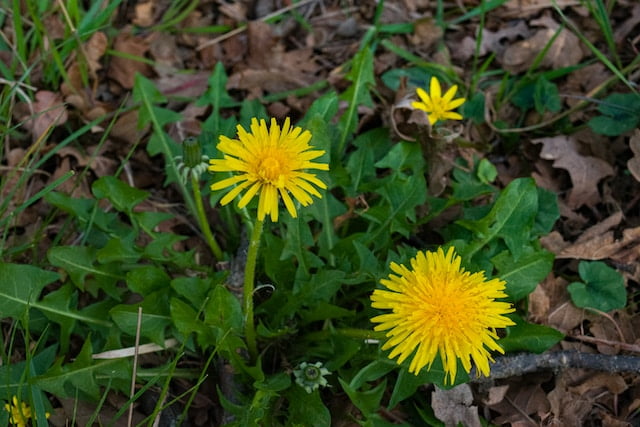
Dandelion
While some people see these yellow flowers or wish-worthy puffballs as pesky weeds, the truth is that dandelions offer many health benefits. And chances are, if you have any green space at all, you’ve already got them growing.
Dandelions have something extra going for them: every single part of the plant is edible and offers some benefit. Considering how well they grow nearly everywhere, this means you don’t have to feel bad pulling them out at the root so you can use the roots, leaves and flowers.
The most widely used part of the dandelion is the root, which contains antioxidants and soluble fiber, making it beneficial for improving kidney and liver disease, gut dysbiosis, inflammation and insulin insensitivity.
The leaves are high in vitamins A, C and K, iron, calcium, magnesium and potassium. They have also been used as a diuretic and to stimulate appetite.
The adorable yellow flower of the plant is especially high in polyphenols, an antioxidant that targets oxidative stress.
The leaves and dandelions can be used raw in salads or made into teas. And dandelion root makes an herbal tea but is also dried and ground to be used as or in a coffee alternative.
To learn more about dandelions and other edible flowers, check out this blog.
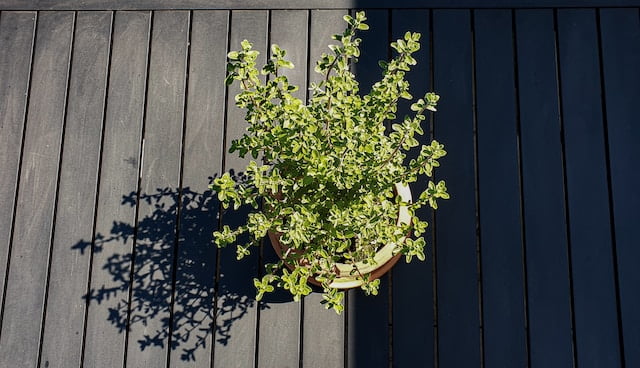
Oregano
Many people associated oregano with classic Italian cuisine. But this unassuming little herb goes way beyond marinara.
What makes oregano especially powerful is the oil it contains. Potent against both bacteria and viruses, and high in antioxidants, oregano oil is often used as a supplement.
Fortunately, drying oregano does not eliminate the oils, just the moisture, so whether fresh, dried or in an oil form, this herb is a great addition to food or your supplement plan.
It can be used in an herb yogurt dip, as part of a pesto, cooked into other pasta sauces or sprinkled fresh over tomatoes fresh from the garden.
Want another idea? Try these Paleo Lamb Burgers, perfect for grilling season.
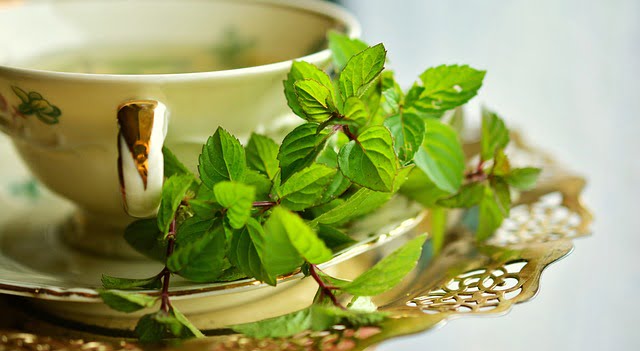
Mint
Great for the breath and the stomach, mint is not only easy to grow (sometimes too easy), it’s a great addition to a healthy diet.
Not many people realize just how many types of mint there are. In addition to the well known and well loved peppermint, spearmint, winter green and catnip (plus many more) offer many of the benefits and some of their own.
Mints are known to help with digestion and can help alleviate stomach cramps. In addition to having a tingly and delicious flavor, mint can even help reduce nausea. It’s also been used as a safe and environmentally friendly insecticide against wasps, hornets, ants and more.
Oddly enough, despite its reputation for making cats go berserk, catnip has the opposite effect on humans, having a calming effect when used in teas.
But mint’s benefits go beyond what eating or drinking it can do.
The scent of peppermint essential oil has been found to improve brain function, such as increased alertness, focus and memory.
And topically, peppermint can help with cracked nipples and pain from breastfeeding and may be as effective as lanolin.
Just be warned if you’re planning on planting mint in your garden, it can take over quickly.
This summer, try a watermelon, feta and mint salad for a real treat. Or just add it to water for a fun infusion.
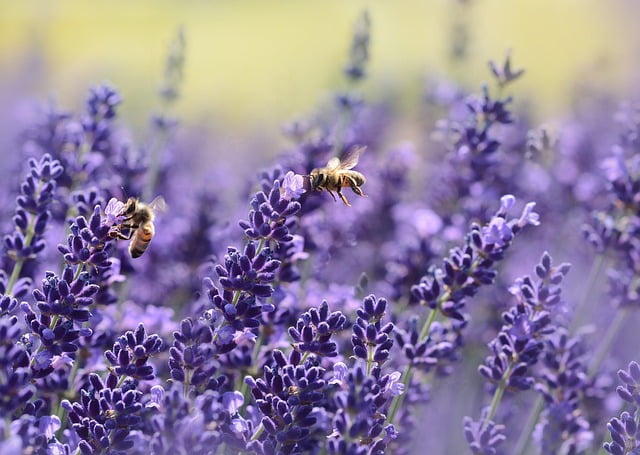
Lavender
It seems you can’t turn your head without spotting some type of lavender product these days. Unfortunately, many of these beauty, food and other items don’t contain real lavender or lavender oil.
The good news? You can easily grow your own lavender and add it to meals, oils, drinks and so much more. This plant grows especially well in pots, making it a beautiful and fragrant addition to patios and decks.
You may already know that lavender is great for calming the mood and is especially nice before bed to aid in sleep.
Additionally, lavender can reduce allergies and asthma thanks to its anti-inflammatory effects. Be warned though: Some people may actually have an allergic reaction to lavender itself.
A surprising way to use lavender is to add a drop of essential oil to your coffee or matcha tea. The flowers are also wonderful in baked goods, sorbet and lemonade.
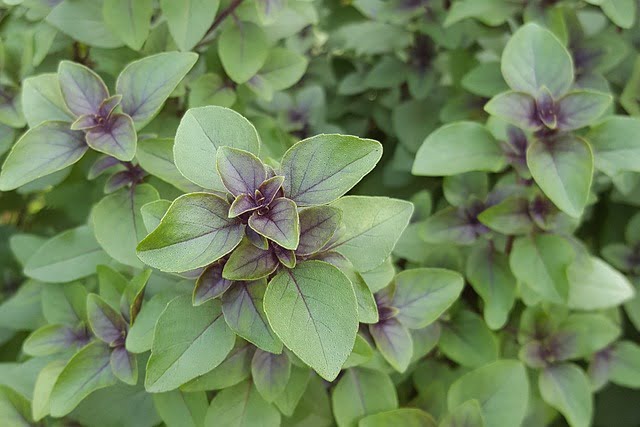
Holy Basil
Also known as Tulsi, holy basil is not actually a kind of basil. It’s more closely related to mint.
It’s relatively easy to grow both outside and indoors. In some climates, it will even act as a perennial, although in most areas it will be an annual, needing to be replanted each year.
Holy basil is considered one of the most widely used and sacred herbs in Ayurvedic medicine (hence the name).
What makes holy basil so revered is just how many conditions it can be used for: it is an adaptogen and therefore used for combat stress; it is antibacterial, antiviral, antifungal, anti-mold and anti-inflammatory; and can be used to combat diabetes and metabolic syndrome.
Holy basil makes for a delightful tea but, with its spicy and bitter flavor, can be eaten raw or added to stir-fries. This blog will give you more herbal tea ideas for stress.
Growing herbs like these can not only spruce up your garden, patio or window, they can also spruce up your mind, your gut, your digestion, your mood and your overall health.
About the author: Maya Strausberg earned her Master Nutrition Therapist certification from NTI before starting her nutrition therapy private practice. She now offers writing and editing services for nutritionists and other health practitioners around the world through her business, Family Tree Nutrition.
Images:
- Image by Sixteen Miles Out on Unsplash
- Image by Lorenzo Ranuzzi on Unsplash
- Image by henry perks on Unsplash
- Peppermint, Peppermint tea, Mint by congerdesign from Pixabay
- Lavenders, Bees, Pollinate by castleguard from Pixabay

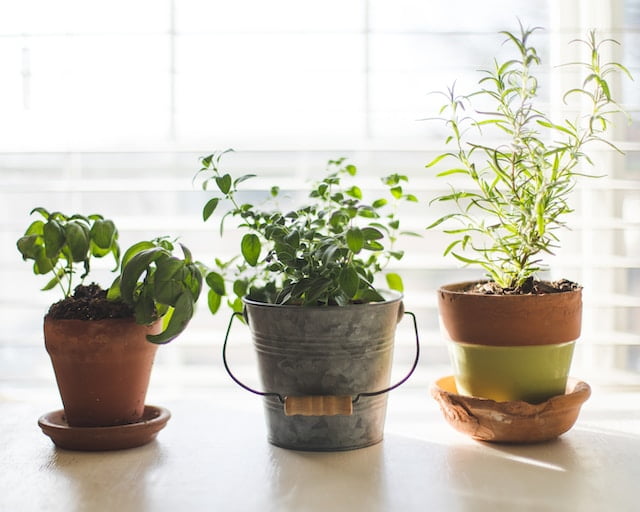



More Stories
The One Thing You Should Never, Ever Do if You Have Insulin Resistance and Want to Lose Weight
Tuna Salad Lunch Box – JSHealth
Advanced Wellness Course – Heart Health